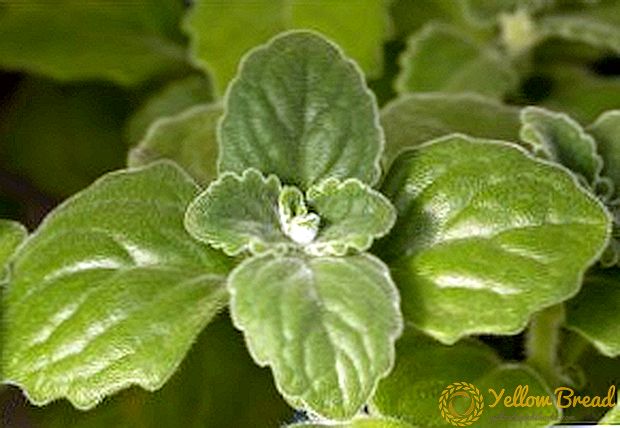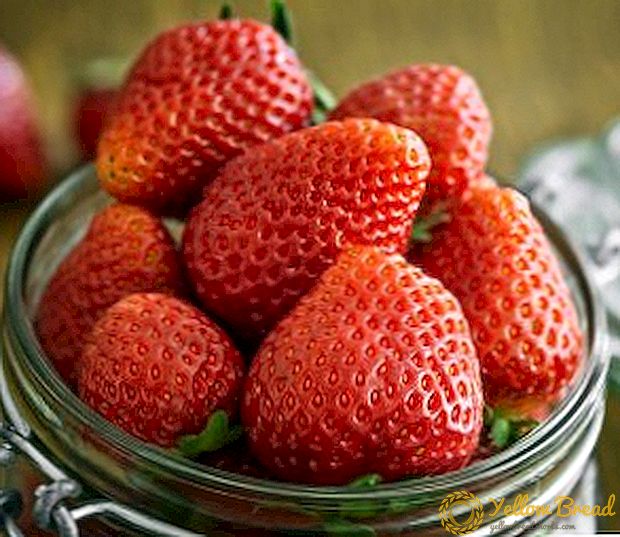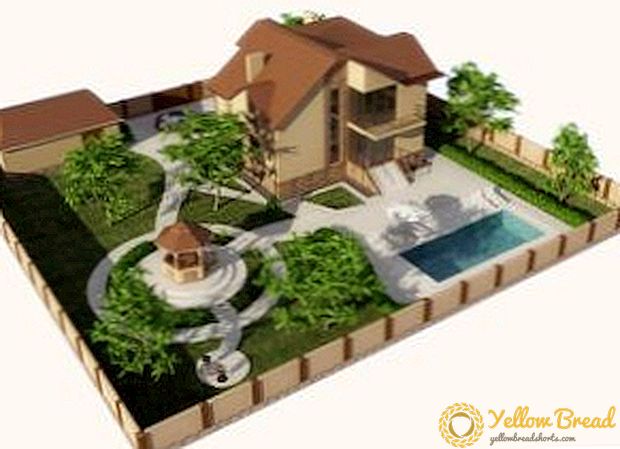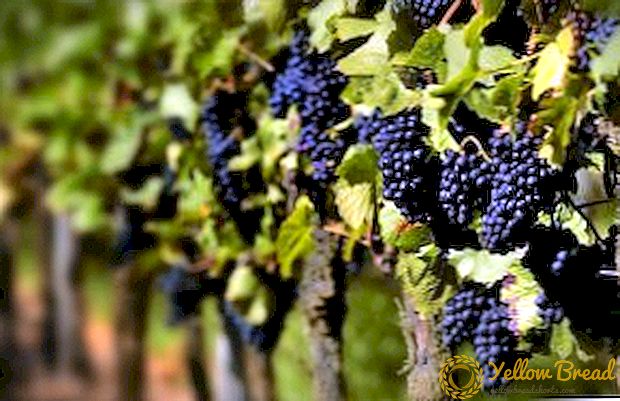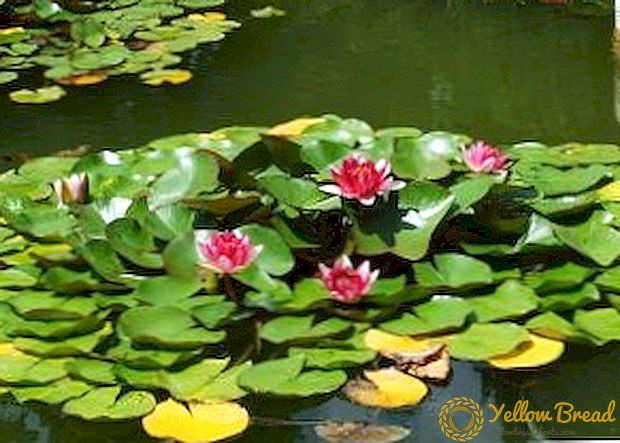 Despite the fact that the apple tree is not a fastidious and fairly common tree, it appeared in the Siberian region not too long ago.
Despite the fact that the apple tree is not a fastidious and fairly common tree, it appeared in the Siberian region not too long ago.
The reason for this are bad climatic conditions. However, more than twenty winter-hardy varieties for Siberia have been bred today. About which we will tell you today.
- Siberian apple tree - get acquainted with varieties
- Sort of apples "Gorno-Altaisk"
- Apple variety "Souvenir of Altai"
- Variety of apples "Ermakovskoe Mountain"
- Variety of apples "Bayana"
- Proper care of the Siberian apple tree
- First about pruning
- Go to fertilizer
- Should there be regular watering?
- Now about winter care
- We plant the Siberian grades an apple-tree
- What time to choose for landing?
- What are the requirements for soil
- Actually the landing itself
Siberian apple tree - get acquainted with varieties
In order to obtain excellent fruits in taste, it is important to take into account not only the advantages of the variety in this matter, but also its ability to adapt to different climatic conditions.
For Siberia, it is important not only that the apple variety be resistant to frost, but also the height of the tree. After all, a big tree can more easily be damaged by the cold wind and lingering Siberian frosts.Therefore, we will try to describe in detail all the advantages and disadvantages of apple varieties for the Siberian region.
Sort of apples "Gorno-Altaisk"

The harvest of this variety is collected in the summer, in the middle and end of August. The most common variety in the region of Western Siberia, but is noted in the northern and Volga-Vyatsky region of Russia. Obtained from the crossing of apple varieties "Ranetka Purple" and "Saffron Pepin".
Fruit of this sort very smallthat for Siberia is not uncommon. Their average weight is only 45 grams. In shape, they are round-ribbed, with ribbing characteristic of them. They are distinguished by the yellow color of the main color, which for the most part is covered with bright red like "blush".
Smooth skin has small areas of rust near the apple stem.
Pulp cream color. Its structure is fine-grained, with a high content of juice. Taste good enough, sweet and sour. However, 100 grams of pulp contains about 25 mg of ascorbic acid.
The Gorno-Altaiskoye tree grows to a medium height, thus making it easier to take care of it, and to avoid the severity of the climate in the gray and Siberian regions.The crown is dense with a large number of skeletal branches. The shape of the crown is rounded. Fruiting occurs on the fruit twigs and kolchatkah, which is formed a lot on the tree.
Among all the other Siberian varieties of apples, "Gornoalstayskoe" is an the most resistant to low temperatures grade In addition, he is not afraid of defeat by scab, which is why he is often used as a donor in breeding. Fruiting trees regularly, starting from the fourth year after planting. Fruits are used in a variety of purposes: from fresh consumption, to juices and jam.
Naturally, the main disadvantage of the variety is their size. In addition, rainy weather can cause cracking of the skin of the fruit. The shelf life of the fruit is very short, is only 20-30 days.
Apple variety "Souvenir of Altai"

This variety refers to autumnsince maturity by his crops comes only in September. This variety is zoned for the most part in the Altai region, but by its qualities it is capable of producing excellent yields in Western Siberia. Parents of the Altai Souvenir are such varieties of apple trees as Gorno-Altai and a mixture of Saffron Pepin and Belle Flay Chinese.
Fruit of this sort not big enough, Total up to 130 grams. However, this does not diminish their other merits. You can distinguish the fruits of the “Altai Souvenir” by the light yellow color of fruits covered with dark pink hatching. The peel is smooth, with a slight rusting around the funnel, covered with a waxy coating. The shape of the fruit is rounded-conical, characterized by intense ribbing over the entire surface.
Creamy flesh has a fine-grained structure. It contains a large amount of juice. Taste the fruit is very good sweet and sour. 100 grams of pulp in this class contains about 12 mg of ascorbic acid.
The tree of this variety is medium growth, which is very suitable for the Siberian region. Due to the low altitude, frost winds are not so terrible for him. Crohn rounded, also medium in size. Branches razlahee, from the trunk depart almost at a right angle.
The advantage of this variety is in rather large sizes of fruits, which is a great rarity for Siberia. Besides, fruiting occurs regularly, and the first harvest can be harvested in the fifth year after planting the seedling.
The fruits are very attractive, suitable for sale and for technical processing.Fruits are stored for about 4 months after cutting them from the tree. The variety is resistant to scab and is naturally not afraid of the harsh Siberian frosts, although the necessary measures for winterizing the trees for the winter should be applied (this will be discussed below).
The only disadvantage of the variety is its low resistance to to such fungal diseaseas monilioz. Also, despite the regularity of the crops, the number of fruits obtained from one tree is average.
Variety of apples "Ermakovskoe Mountain"

This variety refers to the summer. Created by breeders specifically for cultivation in the West Siberian climatic region. Apple varieties such as "Felix Altai" and "Altai Dove" are the parents of "Ermakovsky mountain".
Fruit this variety of apples very smallmaximum weight 80 grams. Their shape is round, the skin is smooth, very rarely there is a golden hue or rustiness near the fruit stem. Also, under the skin are seen large subcutaneous points. The main color of these apples is light yellow. Cover coat covers almost the entire part of the fruit with bright red strokes.
Fine-grained pulp "Ermakovsky Mountain" has a white color.Its juiciness is the same as in the previous variety. The taste is sweet and sour, rated by experts as good. The fruit is characterized by a very pleasant aroma. Also, a large amount of ascorbic acid is included in the pulp - 24 mg per 100 grams of pulp.
The tree is also low growth. The shape of the crown is round, strong thickening is not characteristic of it. The branches diverge to the side of the trunk at right angles. A distinctive feature of the tree is that its branches are very crooked. Fruits are formed on kolchatka and spear. A small part of the crop is formed on the fruit twigs.
The great advantage of this Siberian apple variety is the average height of the tree and the speed of ripening of fruits. Harvest "Ermakovsky Mountain" can be collected in August. Also, the taste of apples of this variety makes it quite common in the growing region.
The size of the fruit can also be attributed to the merits, because in Siberia it is sometimes difficult to get even apples weighing 50 grams. Variety of medium winter hardiness.
The shelf life of the fruit is short and is only one month. Productivity is also not great, although this trend is observed in almost all Siberian apple trees.The tree begins to bear fruit at the age of 4-5 years, however, the frequency of yields often occurs. Leaves of this variety are often affected by scab.
Variety of apples "Bayana"

This variety is actually the most common in the Siberian region because of the size of the fruit. The variety is autumn, the fruits are collected in early September. Parents of the variety are apple varieties "Altai Purple" and a mixture of pollen "Gorno-Altaisk" and "Bellefle-Kitaika".
Despite the fact that, under a common standard, the fruits of the "Bayan" variety belong to the middle ones, for Siberia they are quite large. Weight their hesitates from 85 to 140 grams. The shape of the fruit is round, almost no ribbing.
Primary color is very attractive, golden yellow. The color of the topcoat is purple, it is placed almost over the entire surface of the fruit in the form of intense bands. Upon reaching full maturity, the topcoat acquires a purple patina. The skin is smooth to the touch, very dense.
The color of the pulp is creamy. The structure is coarse-grained, dense. Fruits juicy, according to expert estimates have excellent taste supplemented by a pleasant aroma. The amount of ascorbic acid, which is contained in 100 grams of pulp is 21 mg.
The tree reaches an average height in height, reaching about 4 meters by the 11th year. The shape of the crown is bitumen-like, not thickened, about 3.5 meters in diameter. Straight branches depart from the trunk at an acute angle, but are compactly arranged. The tree has a mixed type of fruiting.
Resistance to frost and fungal diseases like the scab of the variety "Bayana" very high. The variety is also rather fast-growing in comparison with the varieties described above, since the first harvests are harvested for 3-4 years of tree growth. Productivity is quite high, in mature age, trees yield up to 14 tons of apples per hectare. The shelf life of the fruit is about 4 months.
The only disadvantage of this variety can only be low yield in the first years of fruiting, which is only about 4 tons per hectare.
Proper care of the Siberian apple tree
First about pruning

Apple tree at any age requires trimming. However, if at a young age it is aimed at stimulating further growth and increasing the size of fruits, then in a more mature main task is to remove damaged and dried branches.
To form the crown of a young seedling, it is important to cut off all the branches competing with the main branch. At what we cut them necessarily under the "0", not even leaving a pincer. The largest branches also need to be trimmed slightly. The first time they are shortened by 40 centimeters (unless of course your sapling is large enough), and then you should cut about 15-20 centimeters.
Actively fruiting trees also it is useful to conduct regular prevention, removing broken and dry branches, as well as top shoots. Also, if the crown is very thick - it should be thinned out. This is necessary so that the fruits receive more light and are not shaded by the branches of their own tree, as well as for the convenience of harvesting.
In Siberian conditions it is important to choose the right time for pruning, so as not to cause serious damage and disease in a tree. Crop branches better in springbefore tree entry into growth. Wounds are treated with special solutions from infection by fungi.
Go to fertilizer
Fertilizers for Siberian apple varieties act as a compensation for bad weather conditions, are able to maintain its winter hardiness and provide strength for new crops.Therefore, when planting, peat, humus and superphosphate should be introduced into the soil. Also, in the early years of growth, the tree will need nitrogen.
Should there be regular watering?
In fact, everything will depend on the type of soil on which your tree is planted. If there are swamps and a lot of groundwater in the vicinity, then you will not have to water the tree at all (except for watering during planting and for fertilizing). But still, in the summer time at high temperatures it is very important to bring water into the soil with the calculation of 30-50 liters per tree.
Also, when watering should take into account the type of tree. If these are dwarf apple trees, then their roots will be very close to the surface of the soil. Watering in this case should be more regular than for medium-growth Siberian apple trees. However, it is necessary to bring water into the soil either by pouring it into special grooves, or using a rain irrigation system (so as not to accidentally wash the roots).
Now about winter care

So that the soil around the tree trunk does not freeze over in winter, it should cover by highly thick layer such fertilizerlike humus or peat. At the same time, the layer around the trunk can reach 10-20 centimeters.
However, its thickness should be increased gradually, with the onset of frosts, in order to prevent a rise in the heat from rotting fertilizers. Also, the tree at this time should already go completely into winter mode, since fertilizers can cause their growth, which is highly undesirable in winter.
Do not forget that the roots of the tree are in great need of oxygen. Therefore, before the onset of winter, the soil should be carefully dug and only after that should be covered with a layer of fertilizer on top.
We plant the Siberian grades an apple-tree
What time to choose for landing?
Siberian apple trees better planted in the springafter the soil has completely melted. After all, having planted a sapling in the fall, you risk to freeze the unattached young tree. Even if you have already bought a seedling, it is better to dig it in your garden into a shallow ditch (about 5 centimeters) and cover it with a layer of peat and humus to protect it from frost.
What are the requirements for soil
Apple soil is very demanding. Besides the fact that they need fertile soil, apple trees do not get accustomed to sour soils. If you have no choice, then in such a soil should add saltpeter to quench the acid.
Also, the soil should have good drainage, since groundwater can be detrimental to the Siberian apple tree. Strong freezing of the soil can get and water, the expansion of which during freezing can damage the roots of apple trees.
Not suitable for apple and clay soils. For planting apple trees, they should be very well mixed with river sand and various fertilizers in order to artificially make the soil fertile.
The best option for apple trees are loams. On such a soil, the tree practically does not need to be cared for, only periodic fertilizers aimed at increasing resistance to frost and diseases will be beneficial.
Actually the landing itself
For planting apple trees a hole is dug in advance. Also in advance in it you need to fill up a mixture of the upper fertile soil layer with fertilizers and slightly condense at the bottom in the form of a mound. The roots are laid out on top of this knoll and are poured on top of the remaining mixture.
It is very important that the place of transition of the seedling trunk to the root system remains above the ground surface, because after its subsidence the tree will still fall. After compacting the ground around the seedling, it should be watered carefully, using 30 liters of water for this. Immediately after planting, watering can be repeated twice more.


